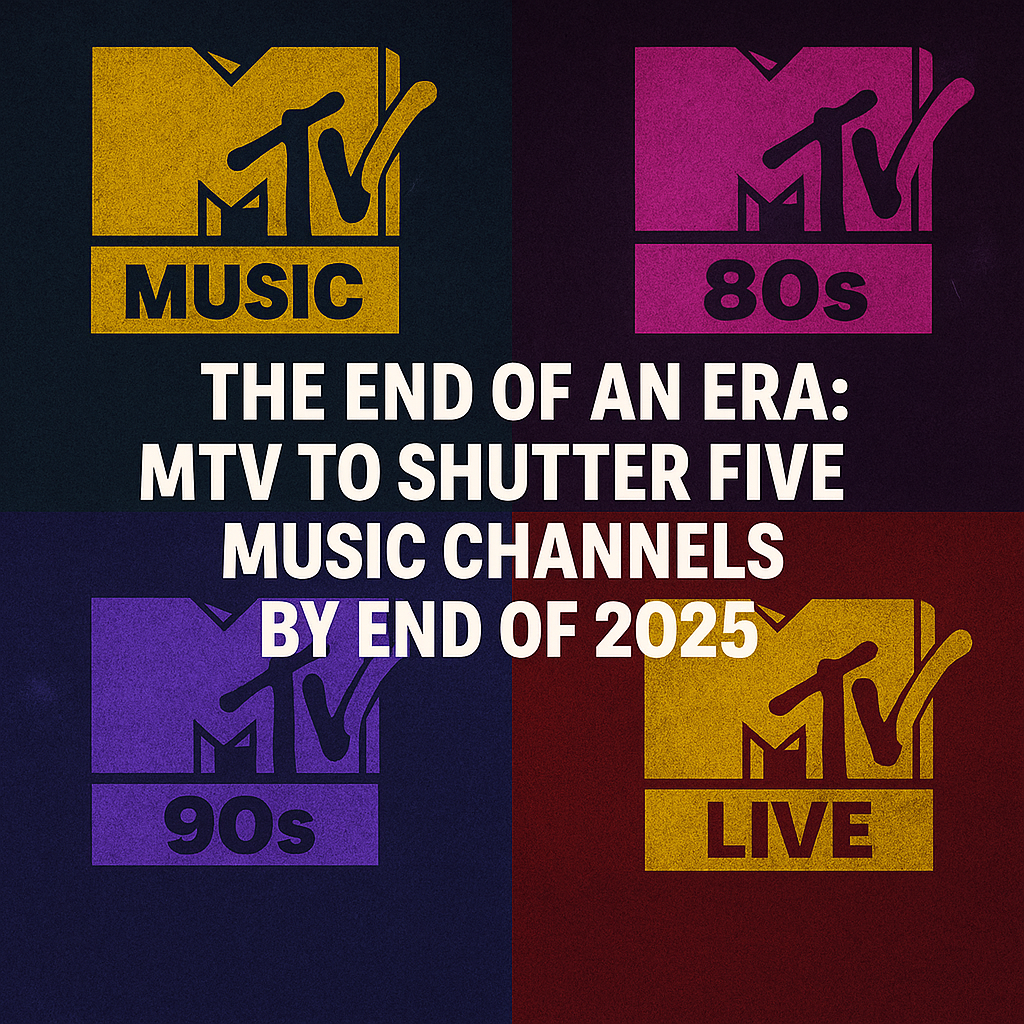The End of an Era: MTV to Shutter Five Music Channels by End of 2025



.webp)
.webp)
After nearly 44 years of shaping music culture, MTV’s parent company Paramount Global has announced it will permanently close five of its iconic music television channels by December 31, 2025 — marking the end of a significant chapter in music broadcasting.
Below, we break down which MTV channels are being shut down, why the decision was made, and what it means for the future of music media — especially for creators, fans, and industry professionals.
Which MTV Channels Are Being Closed?
The five MTV music-oriented channels slated for closure are:
- MTV Music – the flagship music video channel
- MTV 80s – retro, nostalgic hits
- MTV 90s – throwback pop, rock, and classic tracks
- Club MTV – dance, electronic, and club beats
- MTV Live – live performances, concerts, and related programming
One key exception: MTV HD will remain, but it will pivot away from music videos toward reality and entertainment shows like Naked Dating UK and Geordie Shore.
Why Now? The Drivers Behind the Shutdown
This sweeping decision didn’t occur in a vacuum. Several factors explain why Paramount Global is pulling the plug:
1. Declining Audience and Shifting Viewing Habits
Television’s dominance over music consumption has steadily eroded. Today’s audiences favor YouTube, TikTok, and streaming platforms to discover and enjoy music. The traditional broadcast model has lost relevance in a world where fans can watch any video, anytime.
In the UK, MTV’s viewership has dropped sharply — MTV Music averaged around 1.3 million viewers, while MTV 90s drew roughly 950,000. Music fans have simply moved to on-demand, algorithmic, and interactive experiences.
2. Cost-Cutting and Restructuring at Paramount Global
Paramount is under financial pressure to streamline operations and reduce costs by up to $500 million across its global portfolio. Earlier in 2025, the company shuttered Paramount Television Studios and canceled several MTV productions, including Gonzo and Fresh Out UK.
The closure of these five music channels is part of that broader restructuring effort.
3. Focus on Digital and Streaming Platforms
While MTV’s linear music channels are fading out, Paramount is pivoting toward digital and streaming experiences. Expect more emphasis on Paramount+, social media programming, and branded content.
This move reflects an industry-wide trend: media companies are shifting resources from traditional TV to scalable, digital-first models that better reflect current consumer behavior.
Where and When: Regional Phases of the Shutdown
The closures will unfold gradually, region by region:
- UK & Ireland: Among the first to lose the channels.
- Continental Europe and other international markets: Gradual phaseouts expected across France, Poland, Australia, Brazil, and beyond.
Timelines may vary based on contracts, regulations, and local market conditions, but by late 2025, these five channels will be gone worldwide.
Implications for the Music Industry
This isn’t just a media business story — it’s a cultural shift that redefines how we experience music visually. Here’s how it impacts different corners of the industry:
🎧 For Artists and Labels
- The loss of music TV reduces one more “front door” for discovery — but digital has already taken that role.
- Artists who embrace TikTok, YouTube premieres, and live streams will stay ahead.
- Cross-platform branding is now non-negotiable — success comes from uniting presence across social, streaming, and digital video spaces.
📺 For Fans and Viewers
- For longtime MTV fans, this marks the end of an era — a cultural icon that once defined music television.
- Audiences will continue to migrate toward YouTube, Vevo, and TikTok for music videos and performances.
- Niche or genre-focused music TV networks might emerge to fill gaps, especially in areas where streaming isn’t yet universal.
🧩 For Platforms and Media Companies
- Streaming and social platforms will face pressure to expand their role as music video hubs, offering both curated content and monetization tools.
- Expect innovation in interactive formats: shoppable videos, AR/VR music experiences, and short-form storytelling.
- For MTV and Paramount, the move allows focus on brand licensing, digital content, and global cross-media reach — without the expense of traditional channels.
Conclusion: A Bittersweet Farewell and a Digital Beginning
MTV’s music channels were once the cultural epicenter of music discovery — from TRL to MTV Unplugged. Their closure symbolizes a changing world, where streaming and social platforms now drive music culture.
But every ending brings opportunity. This shift challenges artists, fans, and labels to reinvent how we share and experience music visually.
If MTV’s past defined a generation through the television screen, its future — and ours — will play out across the endless digital stage.
.webp)

.svg)

.webp)
